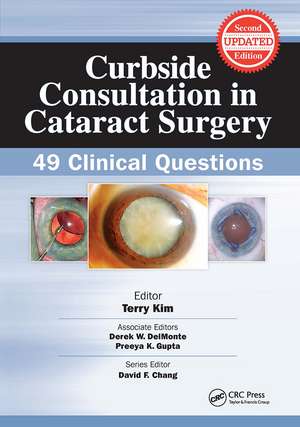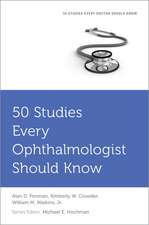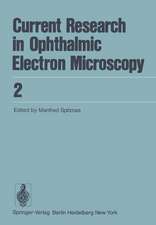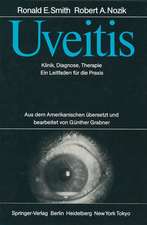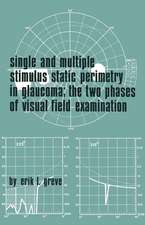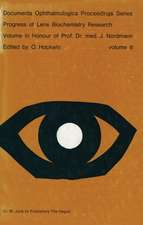Curbside Consultation in Cataract Surgery: 49 Clinical Questions: Curbside Consultation in Ophthalmology
Autor Terry Kimen Limba Engleză Paperback – 15 noi 2013
The Second Edition contains new questions and is completely updated!
Curbside Consultation in Cataract Surgery, Second Edition contains new questions and brief, practical, and evidence-based answers to the most frequently asked questions that are posed during a “curbside consultation” between surgical colleagues.
Dr. Terry Kim and associate editors Drs. Derek Delmonte and Preeya Gupta have assembled 49 of the top cataract consultants from the U.S. and abroad to offer expert advice, preferences, and opinions on tough clinical questions commonly associated with cataract surgery in this updated reference. The unique Q&A format provides quick access to current information related to cataract surgery in the simplicity of a conversation between two colleagues. Numerous images, diagrams, and references are included to enhance the text and to illustrate surgical pearls.
Some of the questions that are answered inside the Second Edition include:
•My patient has unreliable topography due to ocular surface pathology. What are my options for treatment and IOL selection?
•How do I pick the right IOL formula for my patient with a longer/shorter than average eye?
•My capsulorhexis is heading out peripherally. How should I proceed and what should I do if it tears radially?
•How/when should I change my phaco/fluidics settings in the following situations: IFIS, shallow chamber, high axial length, post vitrectomy?
•I have a radial tear in the anterior capsule. How do I proceed with phaco and IOL implantation?
•When should I use a toric intraocular lens versus astigmatic keratotomy/LRI?
•How do I incorporate femtosecond (FS) laser into my current cataract surgery techniques?
Curbside Consultation in Cataract Surgery: 49 Clinical Questions, Second Edition provides information basic enough for residents while also incorporating expert pearls that even experienced cataract surgeons will appreciate. General ophthalmologists, residents, and cataract specialists alike will benefit from the user-friendly and casual format as well as the expert advice contained within.
Preț: 852.56 lei
Preț vechi: 897.42 lei
-5% Nou
Puncte Express: 1279
Preț estimativ în valută:
163.16€ • 169.71$ • 134.70£
163.16€ • 169.71$ • 134.70£
Carte tipărită la comandă
Livrare economică 14-28 aprilie
Preluare comenzi: 021 569.72.76
Specificații
ISBN-13: 9781617110887
ISBN-10: 1617110884
Pagini: 288
Dimensiuni: 178 x 254 x 13 mm
Greutate: 0.68 kg
Ediția:2
Editura: CRC Press
Colecția CRC Press
Seria Curbside Consultation in Ophthalmology
ISBN-10: 1617110884
Pagini: 288
Dimensiuni: 178 x 254 x 13 mm
Greutate: 0.68 kg
Ediția:2
Editura: CRC Press
Colecția CRC Press
Seria Curbside Consultation in Ophthalmology
Public țintă
Professional Practice & DevelopmentCuprins
Dedication Acknowledgments About the Editor About the Associate Editors Contributing Authors Preface Foreword by David F. Chang, MD Section I Preoperative Questions Question 1 My Patient Has Dry Eyes and Blepharitis. How and When Do I Need to Treat These Conditions Before Cataract Surgery? Preeya K. Gupta, MD Question 2 My Patient Has Unreliable Topography Due to Ocular Surface Pathology. What Are My Options for Treatment and Intraocular Lens Selection? Deepinder K. Dhaliwal, MD, LAc and Mojgan Hassanlou, MD, FRCSC Question 3 When and How Should Cataract Surgery Alone Be Performed in Patients With Fuchs’ Dystrophy? David T. Vroman, MD and Kristiana D. Neff, MD Question 4 My Patient Has a Cataract and Glaucoma. Which Patients Need a Combined Glaucoma Procedure, and Which Device(s) Should I Use? Thomas Samuelson, MD Question 5 What Should I Do Differently in Patients at High Risk for Retinal Complications? Steve Charles, MD, FACS, FICS and Eric J. Sigler, MD Question 6 What is Spherical Aberration, and How Do I Know When to Put in a Positive, Negative, or Neutral Spherical Aberration Intraocular Lens? Farrell C. Tyson, MD, FACS Question 7 My Patient Wants Enhanced Depth of Focus and Spectacle Independence. How Should I Decide Between Monovision or a Presbyopia-Correcting Intraocular Lens? Sumitra Khandelwal, MD; David R. Hardten, MD; and Richard L. Lindstrom, MD Question 8 How Do I Pick the Right Intraocular Lens Formula for My Patient With a Longer or Shorter Than Average Eye? Robin R. Vann, MD Question 9 How Do I Address Intraocular Lens Calculations and Selections in the Postkeratorefractive Patient? Warren E. Hill, MD, FACS Question 10 My Cataract Patient Has a Pterygium in the Operative Eye. How Do I Know if it Has an Impact on My Intraocular Lens Calculations? If So, What Should I Do? Mahshad Darvish, MD and Edward Holland, MD Question 11 When Should I Use a Toric Intraocular Lens Versus Astigmatic Keratotomy or Peripheral Corneal-Relaxing Incisions? Eric C. Amesbury, MD and Kevin M. Miller, MD Question 12 My Astigmatic Keratotomy Results Are Unpredictable. How Can I Improve Them? R. Bruce Wallace III, MD Question 13 My Patients Have Irregular Astigmatism. Are They Still Candidates for a Toric Intraocular Lens or Limbal-Relaxing Incisions? If Not, What Are My Options? Parag Majmudar, MD and Fred Chu, MD Question 14 I Have a Cataract Patient With a Traumatic Iris Defect and Glare Symptoms. What Should I Do? Michael E. Snyder, MD and Mauricio A. Perez, MD Question 15 With How Large a Zonular Dialysis Can Phacoemulsification Be Performed? Bonnie An Henderson, MD Question 16 When and How Should I Consider a Nonphacoemulsification Technique to Remove a Cataract? Geoffrey C. Tabin, MA, MD; Dipanjal Dey, MD; and Benjamin Thomas, MD Question 17 How Do I Incorporate Femtosecond Laser Into My Current Cataract Surgery Techniques? Richard Tipperman, MD Section II Intraoperative Questions Question 18 How Do I Move From a Larger to a Smaller Phaco Incision? Paul Ernest, MD Question 19 Under Topical Anesthesia, the Patient Is Uncooperative and Complaining of Pain. What Should I Do? Scott Greenbaum, MD Question 20 What Is the Best Way to Manage Intraoperative Floppy Iris Syndrome? David F. Chang, MD Question 21 My Patient Has a Small Pupil. What Are My Options for Expansion? Boris Malyugin, MD, PhD Question 22 What Should I Do if the Chamber Is so Shallow That it Does Not Deepen Much With Viscoelastic? Lisa Brothers Arbisser, MD Question 23 My Capsulorrhexis Is Heading Out Peripherally. How Should I Proceed, and What Should I Do if it Tears Radially? Brian Little, MA, DO, FHEA, FRCS, FRCOphth Question 24 Following Hydrodissection, the Iris Is Prolapsing and the Globe Is Very Firm. How Should I Proceed? Mark Packer, MD, FACS, CPI Question 25 Despite Attempting Hydrodissection, I Cannot Rotate the Nucleus. How Should I Proceed? William J. Fishkind, MD, FACS Question 26 I Usually Perform Divide-and-Conquer Phacoemulsification. How Can I Incorporate Chopping Into My Technique? Randall J. Olson, MD Question 27 After Chopping or Cracking a 4+ Nucleus, a Leathery Posterior Plate Still Connects the Fragments Centrally. How Should I Proceed? Roger F. Steinert, MD Question 28 How and When Should I Change My Phaco and Fluidics Settings in the Following Situations: Intraoperative Floppy Iris Syndrome, Shallow Chamber, High Axial Length, Postvitrectomy? Barry Seibel, MD Question 29 How Do I Recognize and React to a Posterior Capsular Rupture? Rosa Braga-Mele, MD, MEd, FRCSC and Theodore J. Christakis, MD Question 30 The Anterior Capsule Has a Radial Tear. How Do I Proceed With Phaco and Intraocular Lens Implantation? Christina S. Moon, MD and Sonia H. Yoo, MD Question 31 When and How Should I Implant an Intraocular Lens in the Ciliary Sulcus? Thomas A. Oetting, MS, MD Question 32 The Capsular Bag Is Unexpectedly Mobile During Phaco. When Should I Implant a Capsular Tension Ring, and Which Size Should I Use? Iqbal Ike K. Ahmed, MD, FRCSC Question 33 When Should an Anterior Vitrectomy Be Performed via the Pars Plana Versus the Limbus? Louis D. Skip Nichamin, MD Question 34 If I Cannot Put the Lens in the Bag or the Sulcus, How Do I Approach Scleral Fixation of an Intraocular Lens? Richard S. Hoffman, MD Question 35 When and How Do I Insert an Anterior Chamber Intraocular Lens? Derek W. DelMonte, MD Question 36 How Do I Proceed if I See a Small Wound Burn With Whitening of Corneal Stroma? How Would I Close a Severe Corneal Burn? Robert H. Osher, MD Question 37 How Should I Manage a Small or Large Descemet’s Membrane Detachment That Occurs During Cataract Surgery? Terry Kim, MD Question 38 What Should I Do Differently With a Posterior Polar Cataract? Robert J. Cionni, MD Question 39 What Should I Do Differently With a Hypermature White Cataract? Uday Devgan, MD Section III Postoperative Questions Question 40 How Long Should Topical Antibiotics and Nonsteroidal Anti-Inflammatory Drugs Be Used Before and After Cataract Surgery? Francis S. Mah, MD Question 41 What is Causing Low or High Intraocular Pressure in My Postoperative Patient? Richard A. Lewis, MD Question 42 Following Uneventful Surgery, Three of My Eight Patients Have 4+ Cell and Fibrin on Postoperative Day 1. What Should I Do? Nick Mamalis, MD Question 43 How Do I Manage High-Risk Uveitis Patients Preoperatively and Postoperatively? Michael B. Raizman, MD Question 44 The Lens Has Dropped. How Should I Manage It, and When Should I Refer the Patient to a Retina Specialist? Keith A. Warren, MD Question 45 How Should I Manage a Postoperative Refractive Surprise? Stephen S. Lane, MD Question 46 What Causes My Patients to Complain About Temporal Shadows or Reflections, and How Should I Manage Persistent Symptoms? Samuel Masket, MD and Nicole R. Fram, MD Question 47 What Should I Do With the Unhappy Patient After Implantation of a Presbyopia-Correcting Intraocular Lens in One Eye? After Implantation in Two Eyes? William Trattler, MD and Gaston O. Lacayo III, MD Question 48 Following a Posterior Capsular Rent, the Sulcus-Fixated Intraocular Lens Has Become Decentered. How Should I Proceed? Garry P. Condon, MD Question 49 My Pseudoexfoliation Patient Has Newly Discovered Pseudophacodonesis 5 Years Following Surgery. How Should I Proceed? Alan S. Crandall, MD Financial Disclosures Index
Notă biografică
Terry Kim, MD, Professor of Ophthalmology at Duke Eye Center in Durham, North Carolina, received his medical degree from Duke University School of Medicine in Durham and completed his residency and chief residency in ophthalmology at Emory Eye Center in Atlanta, Georgia. He continued with his fellowship training in corneal, external disease, and refractive surgery at Wills Eye Hospital in Philadelphia, Pennsylvania. He was then recruited to Duke University Eye Center, where he serves as principal and coinvestigator on a number of research grants from the National Institutes of Health and other institutions. Dr. Kim is a former director of the Residency Program and now serves as Director of Fellowship Programs.
Dr. Kim’s academic accomplishments include his extensive publications in the peer-reviewed literature, which include more than 200 journal articles, textbook chapters, and scientific abstracts. He is also coauthor and coeditor of 2 well-respected textbooks on corneal diseases and cataract surgery. Dr. Kim has delivered more than 200 invited lectures, both nationally and internationally.
Dr. Kim was a recipient of the Achievement Award and the Senior Achievement Award from the American Academy of Ophthalmology (AAO). His clinical and research work earned him honors and grants from the National Institutes of Health, Fight for Sight/Research to Prevent Blindness, Heed Ophthalmic Foundation, Alcon Laboratories, and Allergan. Dr. Kim is listed continually in Best Doctors in America, Best Doctors in North Carolina, and America’s Top Ophthalmologists. He has been voted by his peers as one of the 250 most prominent cataract and intraocular lens surgeons in the country by Premier Surgeon, as one of the “135 Leading Ophthalmologists in America” by Becker’s ASC Review, as well as one of the “Top 50 Opinion Leaders” by Cataract & Refractive Surgery Today.
Dr. Kim serves on the Governing Board for the American Society of Cataract and Refractive Surgery (ASCRS) as Chair of the Cornea Clinical Committee, on the Annual Program Committee for the AAO, and on the Executive Committee and Board of Directors for the Cornea Society. He recently was inducted into the International Intra-Ocular Implant Club and is consultant to the Ophthalmic Devices Panel of the FDA. Kim also sits on the editorial board for several journals, including Cornea, Journal of Cataract and Refractive Surgery, Ocular Surgery News, EyeWorld, Cataract & Refractive Surgery Today, Premier Surgeon, Review of Ophthalmology, Advanced Ocular Care, and Topics in Ocular Antiinfectives. As consultant ophthalmologist for the Duke men's basketball team, Kim provides ophthalmic care for the players and coaches and has performed surgical procedures that have been featured on nationally televised programs such as those aired on the Discovery channel.
Dr. Kim’s academic accomplishments include his extensive publications in the peer-reviewed literature, which include more than 200 journal articles, textbook chapters, and scientific abstracts. He is also coauthor and coeditor of 2 well-respected textbooks on corneal diseases and cataract surgery. Dr. Kim has delivered more than 200 invited lectures, both nationally and internationally.
Dr. Kim was a recipient of the Achievement Award and the Senior Achievement Award from the American Academy of Ophthalmology (AAO). His clinical and research work earned him honors and grants from the National Institutes of Health, Fight for Sight/Research to Prevent Blindness, Heed Ophthalmic Foundation, Alcon Laboratories, and Allergan. Dr. Kim is listed continually in Best Doctors in America, Best Doctors in North Carolina, and America’s Top Ophthalmologists. He has been voted by his peers as one of the 250 most prominent cataract and intraocular lens surgeons in the country by Premier Surgeon, as one of the “135 Leading Ophthalmologists in America” by Becker’s ASC Review, as well as one of the “Top 50 Opinion Leaders” by Cataract & Refractive Surgery Today.
Dr. Kim serves on the Governing Board for the American Society of Cataract and Refractive Surgery (ASCRS) as Chair of the Cornea Clinical Committee, on the Annual Program Committee for the AAO, and on the Executive Committee and Board of Directors for the Cornea Society. He recently was inducted into the International Intra-Ocular Implant Club and is consultant to the Ophthalmic Devices Panel of the FDA. Kim also sits on the editorial board for several journals, including Cornea, Journal of Cataract and Refractive Surgery, Ocular Surgery News, EyeWorld, Cataract & Refractive Surgery Today, Premier Surgeon, Review of Ophthalmology, Advanced Ocular Care, and Topics in Ocular Antiinfectives. As consultant ophthalmologist for the Duke men's basketball team, Kim provides ophthalmic care for the players and coaches and has performed surgical procedures that have been featured on nationally televised programs such as those aired on the Discovery channel.
Descriere
Curbside Consultation in Cataract Surgery, Second Edition contains new questions and brief, practical, and evidence-based answers to the most frequently asked questions that are posed during a “curbside consultation” between surgical colleagues.
